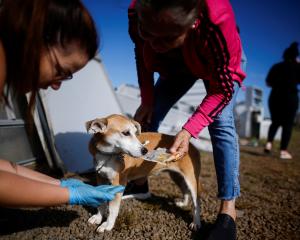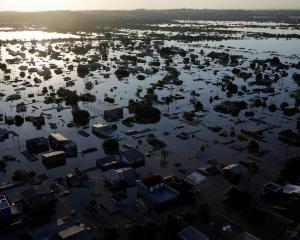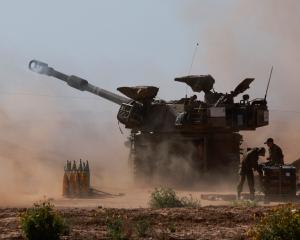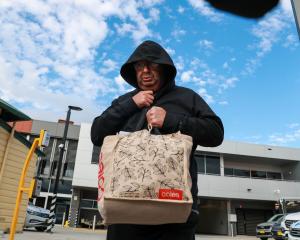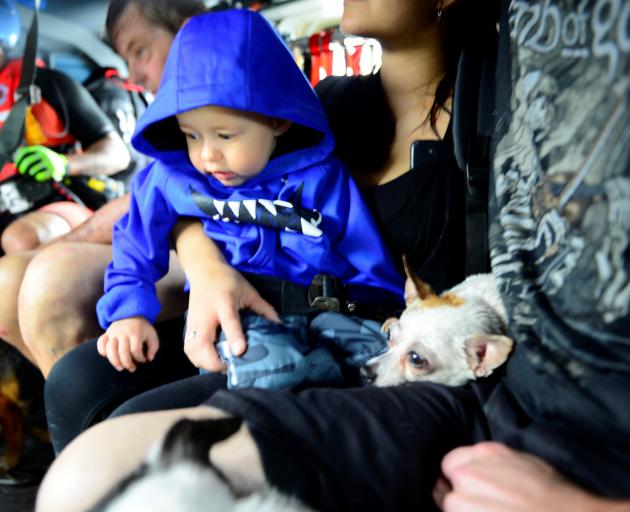
Tropical Storm Harvey was set to dump more rain on Houston on Monday, adding to catastrophic flooding that paralysed the fourth most populous US city and prompted mass evacuations in nearby counties as rivers hit crests not seen for centuries.
Harvey came ashore late on Friday as the most powerful hurricane to hit Texas in more than 50 years and has killed at least two people.
It has since sat in the same general area around Texas' Gulf of Mexico Coast where it is forecast to remain for several more days, drenching parts of the region with a year's worth of rainfall in the span of a week.
Schools, airports and office buildings in Houston were ordered to close on Monday as scores of roads were turned into rivers by floods and chest-high water filled numerous neighborhoods in the low-lying city.
Torrential rain from Harvey hit areas more than 240km away, swelling rivers upstream and causing a surge that was heading toward the Houston area.
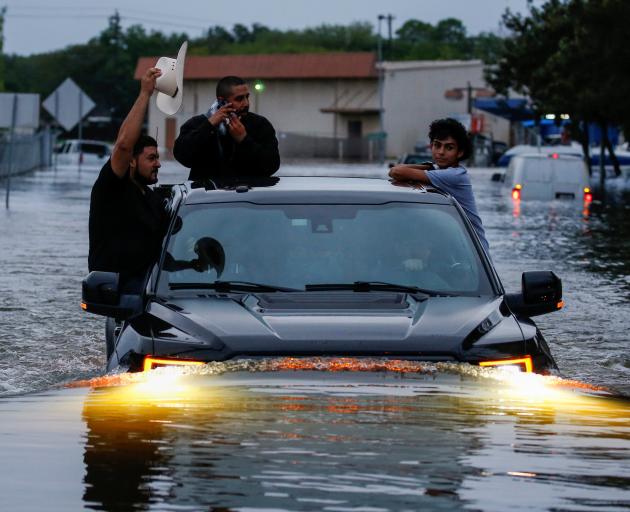
More than 50,000 people were ordered to leave parts of Fort Bend County, about 55km southwest of Houston, as the Brazos River was set to crest at a record high of 18 metres this week, 4.3 metres above its flood stage.
Brazos County Judge Robert Hebert told reporters the forecast crest represents a high not seen in at least 800 years.
Steve Bowen, chief meteorologist at reinsurance firm Aon Benfield, said: "What we're seeing is the most devastating flood event in Houston's recorded history. We're seeing levels of rainfall that are unprecedented."
Total precipitation could reach 127 centimetres in some coastal areas of Texas by the end of the week, or the average rainfall for an entire year, forecasters said.
"Water started flooding our house and by last night we were unable to leave," said Maria Davila, one of about 1000 people in a makeshift shelter at Houston's sprawling convention center.
US President Donald Trump planned to go to Texas on Tuesday to survey damage from the storm, a White House spokeswoman said on Sunday.
Trump, facing the first big US natural disaster since he took office in January, signed a disaster proclamation on Friday, triggering federal relief efforts. Texas Governor Greg Abbott said on Sunday that 54 counties had been declared state disaster areas and he plans to add 1000 more National Guard personnel to the flood battle.
MASSIVE DAMAGE
The Harris County Sheriff's Office rescued more than 2000 people in the greater Houston area using vehicles including motorboats, airboats and humvees on Sunday, a spokesman said.
The US Coast Guard and Houston police rescued hundreds more as residents brought boats to staging centers to help.
The Gulf is home to almost half of the nation's refining capacity, and the reduced supply could affect gasoline supplies across the US Southeast and other parts of the country. Shutdowns extended across the coast, including Exxon Mobil's Baytown refinery, the second largest US refinery.
All Houston port facilities would be closed on Monday because of the weather threat, a port spokeswoman said.
More than 220,000 customers in the Houston area were without power on Monday morning, utilities CenterPoint Energy and AEP Texas said.
Houston's George Bush Intercontinental Airport, one of the nation's busiest, and William P. Hobby airport halted all commercial flights on Sunday. The airports remained closed to commercial traffic on Monday.
Forecasters could only draw on a few comparisons to the storm, recalling Hurricane Katrina, which devastated New Orleans and killed 1800 people in 2005.
Katrina resulted in more than $US15 billion ($NZ20 billion) in flood insurance losses in Louisiana and Mississippi.
Flood damage in Texas from Hurricane Harvey may equal that from Katrina, the costliest natural disaster in US history, an insurance research group said on Sunday.
Jose Rengel, a 47-year-old construction worker who lives in Galveston, helped rescue efforts in Dickinson, southeast of Houston, where he saw water cresting the tops of cars.
"I am blessed that not much has happened to me, but these people lost everything. And it keeps raining," he said. "The water has nowhere to go."

